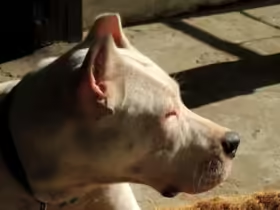How to Keep Your Cat Entertained: The Best Toys and Activities for Indoor Cats
Keeping indoor cats entertained is essential for their mental and physical well-being. Unlike their outdoor counterparts, indoor cats don’t have the luxury of exploring the great outdoors, which means their environment needs to be enriched to prevent boredom and associated behavior problems. In this guide, we’ll explore a range of toys and activities designed to keep your feline friend engaged, healthy, and happy.
1. Interactive Toys
Interactive toys stimulate a cat’s natural hunting instincts and provide both physical and mental stimulation. Here are some popular choices:
Laser Pointers
Laser pointers are a favorite among many cat owners. They allow your cat to chase a small, elusive light spot around the room, which taps into their natural prey drive. Be sure to never shine the laser directly into your cat’s eyes, and always end the game with a tangible toy for your cat to “catch,” ensuring they don’t become frustrated.
Feather Wands
Feather wands or teasers are excellent for interactive play. They mimic the movement of birds, which can be highly engaging for cats. Use them to encourage your cat to jump, pounce, and stretch, which helps keep them physically fit.
Automated Toys
Battery-operated toys that move or make sounds can provide continuous entertainment for your cat. Look for toys that simulate the erratic movements of small animals to keep your cat’s attention.
2. Puzzle Toys
Puzzle toys are designed to challenge your cat’s intellect and problem-solving skills. They often involve hiding treats or kibble inside compartments that the cat must figure out how to access.
Treat-Dispensing Toys
These toys require your cat to roll, bat, or manipulate the toy to release treats. They offer mental stimulation and encourage exercise as your cat works for their reward.
Food Puzzles
Food puzzles can slow down fast eaters and prevent boredom. They come in various forms, such as mazes or balls that dispense food when rolled. This type of toy can also aid in weight management by making mealtime more engaging.
3. Scratching Posts and Cat Trees
Scratching posts and cat trees are not only great for your cat’s claws but also provide a space for climbing and exploring.
Scratching Posts
A scratching post is essential for any indoor cat to maintain their claws and avoid damaging your furniture. Posts come in various materials, including sisal, cardboard, and carpet. Place the post in a prominent location to encourage use.
Cat Trees and Condos
Cat trees and condos offer multiple levels for climbing and lounging. They often include scratching posts and cozy spots for your cat to curl up. These structures cater to your cat’s climbing instincts and provide a vantage point from which they can observe their surroundings.
4. Catnip and Cat Grass
Catnip and cat grass can provide a fun and stimulating experience for your cat.
Catnip Toys
Catnip is a herb that many cats find irresistible. It can stimulate playfulness and excitement. Catnip toys come in various shapes, such as mice, balls, or plushies. Introduce catnip in moderation to avoid overstimulation.
Cat Grass
Cat grass (often wheatgrass) provides a safe way for indoor cats to satisfy their instinct to chew on plants. It can also aid in digestion and help with hairball prevention.
5. DIY Enrichment
Sometimes, the best entertainment can come from simple, homemade toys and activities.
Cardboard Boxes and Paper Bags
Cats love to explore and hide in cardboard boxes and paper bags. These simple items can provide hours of entertainment and mental stimulation. Just make sure there are no small parts or staples that could be a choking hazard.
Homemade Toys
Create your own cat toys using items like yarn, feathers, or crinkly paper. Be sure to supervise playtime with homemade toys to prevent ingestion of small parts.
6. Scheduled Playtime
Regular, scheduled playtime is crucial for keeping your cat engaged. Cats thrive on routine, and setting aside dedicated time each day for play can improve their overall happiness.
Daily Play Sessions
Aim for at least 15-30 minutes of interactive play each day. This can be split into multiple shorter sessions if your cat prefers. Use a variety of toys to keep things interesting.
Training and Enrichment
Incorporate basic training into playtime. Teach your cat simple commands or tricks using treats and positive reinforcement. This can be both mentally stimulating and rewarding for your cat.
7. Social Interaction
Cats are social animals, and spending quality time with their human companions is important for their well-being.
Cuddles and Attention
Regular petting, cuddling, and sitting together can strengthen the bond between you and your cat. Many cats enjoy being held or lying on their owners’ laps, which provides comfort and security.
Playdates
If your cat is social with other felines, arrange playdates with trusted friends or family members who have cats. Supervised play can offer additional stimulation and social interaction.
Conclusion
Keeping your indoor cat entertained involves providing a mix of interactive toys, puzzle games, scratching posts, and regular playtime. By offering a variety of enrichment activities, you can ensure your cat remains happy, healthy, and mentally stimulated. Remember that each cat is unique, so observe your feline friend’s preferences and adjust their entertainment options accordingly. With the right approach, you can create a stimulating environment that keeps your cat engaged and content.











Leave a Reply